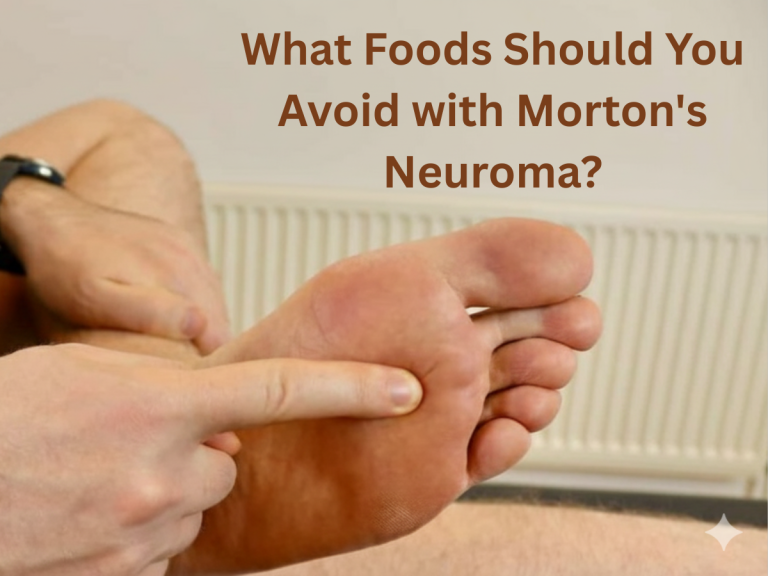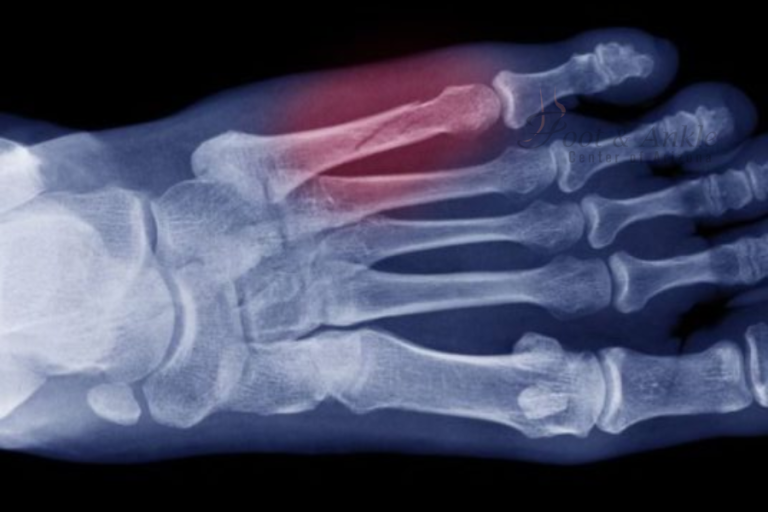Foot pain is one of the common conditions that may significantly limit our daily activities, mobility, comfort, and thus the quality of life. Various kinds of pain in the foot, particularly on top of the foot, can be nagging and may interfere with simple activities like walking or running or, at times, even wearing shoes. Hence, understanding the underlying causes of pain is critical for its effective treatment and management.
The following article is an attempt to explain in greater detail some of the causes, symptoms, and treatment options for pain on the top of the foot. In this, we will present an overview of pain on top of the foot by discussing the anatomy of the foot, common causes of pain in that region, diagnosis, and strategies for treatment. Whether an athlete with a sports-related injury or someone with unexplained foot pain, the following information will help you understand better what is going on and where to seek appropriate care.
Understanding Foot Anatomy
A basic knowledge of foot anatomy is requisite for the diagnosis and treatment of pain on top of the foot. The foot is a rather complex structure that consists of bones, ligaments, tendons, and muscles working together to bear body weight and transmit forces so that movement can ensue.
Bones: The foot contains 26 bones, which can be categorized into three main groups:
- Tarsals: Seven short bones in the hindfoot and midfoot, including the talus and calcaneus.
- Metatarsals: Five long bones in the midfoot extending to the toes.
- Phalanges: Fourteen bones that make up the toes (two in the big toe, three in each of the other toes).
Ligaments and Tendons:
- Ligaments connect bones to other bones, providing stability to the foot’s structure.
- Tendons connect muscles to bones, enabling movement.
- On the top of the foot, important structures include:
- Extensor tendons: Run along the top of the foot and help lift the toes and foot.
- Anterior tibialis tendon: Connects the anterior tibialis muscle to the inner part of the foot, helping to lift the foot.
Muscles: Various muscles work together to control foot movement, including:
- Intrinsic muscles: Located within the foot itself.
- Extrinsic muscles: Originate in the lower leg and control the foot via long tendons.
Understanding this anatomy is crucial in diagnosing pain on the top of the foot, as it allows healthcare professionals to pinpoint the exact location and structures involved in the discomfort.
Common Causes of Pain on the Top of the Foot
Extensor Tendonitis
Extensor tendonitis is a common cause of pain on the top of the foot. It involves inflammation of the tendons that run along the top of the foot and help to lift the toes and foot.
Symptoms:
- Pain along the top of the foot, often extending to the toes
- Swelling over the affected tendons
- Difficulty moving the toes, especially when trying to lift them
- Pain that worsens with activity and improves with rest
Causes:
- Overuse: Repetitive motions, such as those in running or dancing
- Tight shoes: Footwear that puts pressure on the top of the foot
- Sudden increase in activity level
- Changes in training surface or intensity
Treatment options:
- Rest: Reducing activities that exacerbate the pain
- Ice: Applying cold packs to reduce inflammation
- Physical therapy: Exercises to strengthen and stretch the affected area
- Anti-inflammatory medications: Over-the-counter NSAIDs to reduce pain and inflammation
- Proper footwear: Shoes with a wider toe box and good support
Metatarsal Fractures
Metatarsal fractures are breaks in one or more of the five long bones in the midfoot. These fractures can cause significant pain and disability.
Symptoms:
- Sharp, intense pain on the top of the foot
- Swelling and bruising
- Difficulty walking or bearing weight on the affected foot
- Visible deformity in severe cases
Causes:
- Trauma: Direct impact or crushing injury to the foot
- Overuse: Repetitive stress, common in athletes (stress fractures)
- Falls: Especially from a height
- Twisting injuries: Sudden rotation of the foot
Treatment options:
- Immobilization: Using a cast or boot to allow the bone to heal
- Rest and elevation: Keeping weight off the foot and reducing swelling
- Pain management: Over-the-counter or prescription pain relievers
- Surgery: In cases of severe fractures or misalignment
- Gradual return to activity: Under medical supervision
Stress Fractures
Stress fractures are tiny cracks in the bone that develop over time due to repetitive force or overuse. They’re common in athletes and individuals who suddenly increase their activity level.
Symptoms:
- Gradual onset of pain that worsens with activity
- Swelling on the top of the foot
- Tenderness when touching the affected area
- Pain that improves with rest but returns with activity
Causes:
- Repetitive impact: Common in runners, dancers, and military recruits
- Sudden increase in activity intensity or duration
- Poor footwear: Lack of proper support or cushioning
- Weakened bones: Due to conditions like osteoporosis
Treatment options:
- Rest and activity modification: Reducing high-impact activities
- Protective footwear: Using supportive shoes or boots
- Cross-training: Engaging in low-impact activities during recovery
- Gradual return to activity: Slowly increasing intensity under medical guidance
- In severe cases: Immobilization with a cast or boot
Turf Toe
The turf toe is a sprain of the big toe’s main joint, often seen in athletes who play on artificial turf.
Symptoms:
- Pain at the base of the big toe
- Swelling and bruising around the joint
- Limited movement of the big toe
- Pain when pushing off during walking or running
Causes:
- Hyperextension of the big toe: Often occurs when pushing off during running or jumping
- Repetitive stress: Common in sports that involve sudden stops and starts
- Improper footwear: Shoes with excessive flexibility in the forefoot
Treatment options:
- Rest and ice: To reduce pain and swelling
- Taping or bracing: To support the toe and limit movement
- Stiff-soled shoes: To prevent excessive bending of the toe
- Physical therapy: To restore strength and flexibility
- In severe cases: Immobilization or surgery
Nerve Compression
Nerve compression on the top of the foot often involves the deep peroneal nerve, which can become entrapped or irritated.
Symptoms:
- Pain, tingling, or numbness on the top of the foot
- The burning sensation between the first and second toes
- Weakness in foot dorsiflexion (lifting the foot)
- Pain that may extend up the shin
Causes:
- Tight shoes or laces: Putting pressure on the nerves
- Trauma: Direct injury to the top of the foot
- Anatomical abnormalities: Such as bone spurs or ganglion cysts
- Repetitive motions: Causing swelling and nerve irritation
Treatment options:
- Adjusting footwear: Choosing shoes with a wider toe box
- Physical therapy: Exercises to stretch and strengthen the foot
- Medication: Anti-inflammatory drugs or nerve pain medications
- In severe cases: Surgical decompression of the nerve
Gout
Gout is a form of arthritis caused by the buildup of uric acid crystals in the joints, often affecting the big toe but can also occur on the top of the foot.
Symptoms:
- Sudden and severe pain, often starting at night
- Redness and swelling in the affected area
- Warmth and tenderness in the joint
- Limited range of motion
Causes:
- High levels of uric acid in the blood
- Genetic factors
- Dietary factors: High intake of purine-rich foods and alcohol
- Certain medical conditions: Such as hypertension and diabetes
Treatment options:
- Medication: NSAIDs, colchicine, or corticosteroids for acute attacks
- Uric acid-lowering drugs: For long-term management
- Dietary changes: Reducing intake of purine-rich foods and alcohol
- Lifestyle modifications: Weight management and increased water intake
Rheumatoid Arthritis
Rheumatoid arthritis (RA) is an autoimmune condition that can affect various joints in the body, including those in the foot.
Symptoms:
- Pain and swelling in the joints of the foot, including the top
- Stiffness, especially in the morning or after periods of inactivity
- Warmth in the affected joints
- Deformities in advanced stages
Causes:
- Autoimmune response: The body’s immune system attacking its own tissues
- Genetic factors: Increased risk with family history
- Environmental factors: Smoking and certain infections may increase risk
Treatment options:
- Disease-modifying antirheumatic drugs (DMARDs): To slow disease progression
- Biological therapies: Targeting specific parts of the immune system
- Pain management: NSAIDs or corticosteroids
- Physical therapy: To maintain joint flexibility and strength
- In severe cases: Surgery to repair or replace damaged joints
Diagnosing the Cause of Foot Pain
Accurate diagnosis is crucial for effectively treating pain on the top of the foot. Healthcare providers use a combination of methods to determine the underlying cause:
Medical History and Symptoms Review
A thorough review of the patient’s medical history and current symptoms is the first step in diagnosis. This includes:
- Detailed description of the pain: Location, intensity, duration, and any factors that worsen or alleviate it
- History of injuries or medical conditions
- Current medications and supplements
- Occupation and lifestyle factors, including sports and physical activities
- Family history of relevant conditions (e.g., arthritis, gout)
Physical Examination
A comprehensive physical examination of the foot includes:
- Visual inspection: Looking for swelling, discoloration, or deformities
- Palpation: Feeling for areas of tenderness or abnormalities
- Range of motion tests: Assessing the flexibility and movement of joints
- Strength tests: Evaluating muscle strength in the foot and ankle
- Neurological tests: Checking for sensation and reflexes
Diagnostic Imaging
Various imaging techniques may be used to visualize the internal structures of the foot:
- X-rays: Useful for identifying fractures, dislocations, or arthritic changes
- MRI (Magnetic Resonance Imaging): Provides detailed images of soft tissues, helpful for diagnosing tendon or ligament injuries
- CT (Computed Tomography) Scan: Offers detailed 3D images of bones, useful for complex fractures or structural abnormalities
- Ultrasound: Can be used to visualize soft tissue injuries and inflammation
Laboratory Tests
In some cases, blood tests or other laboratory analyses may be necessary:
- Blood tests: To check for markers of inflammation or conditions like gout or rheumatoid arthritis
- Synovial fluid analysis: In cases of suspected joint inflammation or infection
Treatment and Management Options
Treatment for pain on the top of the foot varies depending on the underlying cause. Here are some common approaches:
Rest and Activity Modification
- RICE protocol (Rest, Ice, Compression, Elevation): Especially effective for acute injuries
- Avoiding activities that exacerbate pain
- Gradual return to normal activities as tolerated
Medication
- Over-the-counter pain relievers: NSAIDs like ibuprofen or naproxen for pain and inflammation
- Prescription medications: Stronger pain relievers, corticosteroids for severe inflammation, or specific medications for conditions like gout or rheumatoid arthritis
Physical Therapy
- Exercises to strengthen foot muscles and improve flexibility
- Manual therapy techniques to reduce pain and improve function
- Gait training to correct abnormal walking patterns
- Modalities such as ultrasound or electrical stimulation to reduce pain and promote healing
Orthotics and Footwear
- Custom orthotics: Inserts designed to provide proper support and alignment
- Proper footwear: Shoes with adequate support, cushioning, and a wide toe box
- Braces or supports: To immobilize or protect specific areas of the foot
Surgical Interventions
In cases where conservative treatments are ineffective, surgery may be considered:
- Fracture repair: For severe or misaligned fractures
- Tendon or ligament repair: For tears or severe sprains
- Nerve decompression: For severe cases of nerve entrapment
- Joint repair or replacement: In advanced cases of arthritis
Preventive Measures
Taking steps to prevent foot pain is crucial for maintaining overall foot health:
Proper Footwear
- Choose shoes appropriate for your activities
- Ensure proper fit with adequate room in the toe box
- Replace shoes regularly, especially athletic shoes
- Use sport-specific shoes for different activities
Exercise and Stretching
- Regular foot and ankle exercises to maintain strength and flexibility
- Proper warm-up before physical activities
- Gradual increase in exercise intensity and duration
- Incorporation of low-impact activities to reduce stress on feet
Weight Management
- Maintain a healthy body weight to reduce stress on feet
- A balanced diet and regular exercise
- Consult with healthcare providers for weight management strategies if needed
When to See a Doctor
While many causes of foot pain can be managed at home, certain situations warrant medical attention:
Persistent or Severe Pain
- Pain that doesn’t improve with rest and home treatments
- Severe pain that limits daily activities
Inability to Bear Weight
- Difficulty walking or putting weight on the affected foot
- Suspicion of a fracture or severe sprain
Progressive Symptoms
- Worsening pain, swelling, or redness
- Development of fever or chills, which may indicate infection
Conclusion
Pain on the top of the foot can arise from various causes, ranging from simple overuse injuries to more complex conditions like arthritis. Understanding the anatomy of the foot, recognizing common causes of pain, and knowing the appropriate diagnostic and treatment approaches are crucial for effectively managing this condition.
While many cases of foot pain can be treated with conservative measures such as rest, proper footwear, and physical therapy, some situations require medical intervention. It’s important to listen to your body and seek professional help when pain persists or worsens.
By taking preventive measures, such as wearing appropriate footwear, maintaining a healthy weight, and engaging in regular, balanced exercise, you can reduce your risk of developing foot pain. Remember, your feet are the foundation of your body’s movement, and taking care of them is an investment in your overall health and well-being.
If you experience persistent or severe pain on the top of your foot, don’t hesitate to consult with a healthcare professional. Early intervention can prevent minor issues from developing into more serious problems, ensuring that you stay on your feet and active for years to come.




